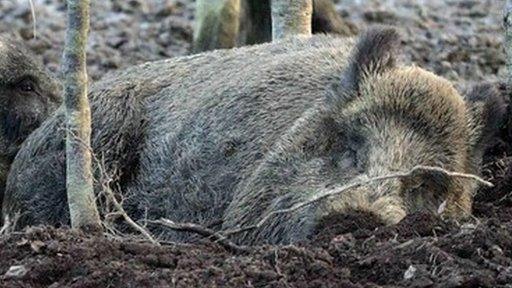Forest of Dean: People learning to live alongside boars
- Published
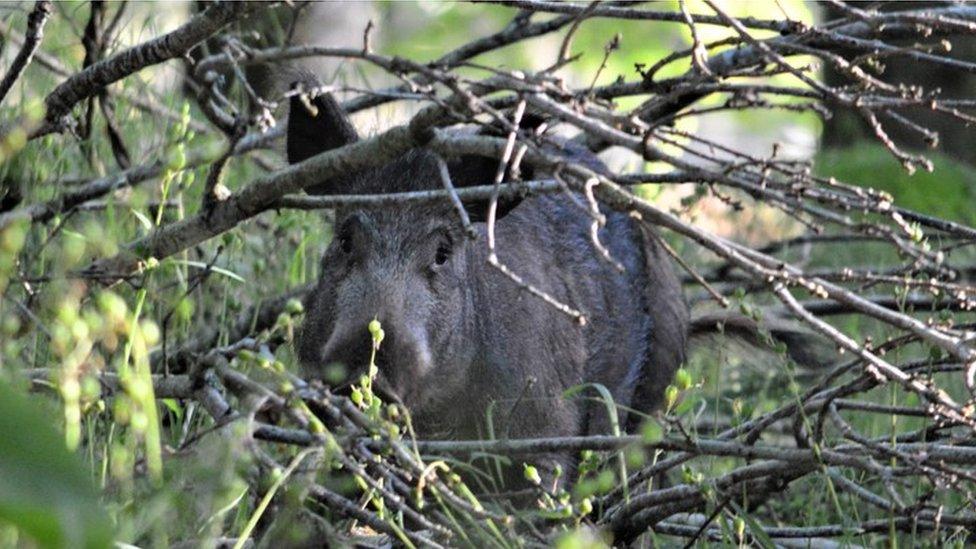
Wild boar were hunted to extinction in the Forest of Dean about 700 years ago before being reintroduced in the 1990s
People are happily living alongside wild boar after misunderstanding them for years, according to new research.
Naturalist Chantal Lyons has studied the animals in the Forest of Dean and said people are becoming more familiar with the feral species.
Boar were hunted to extinction 700 years ago, but became established again in the Forest in the 1990s.
"It seems people are more chilled about them because they are more familiar," said Ms Lyons.
Boar were once common in the countryside and in recent years several populations have started to roam English and Scottish woods once more due to accidental and illegal releases into the wild.
The species' right to exist in Britain, however, has been heavily debated due to concerns about the impact the animals have on both people and the countryside.
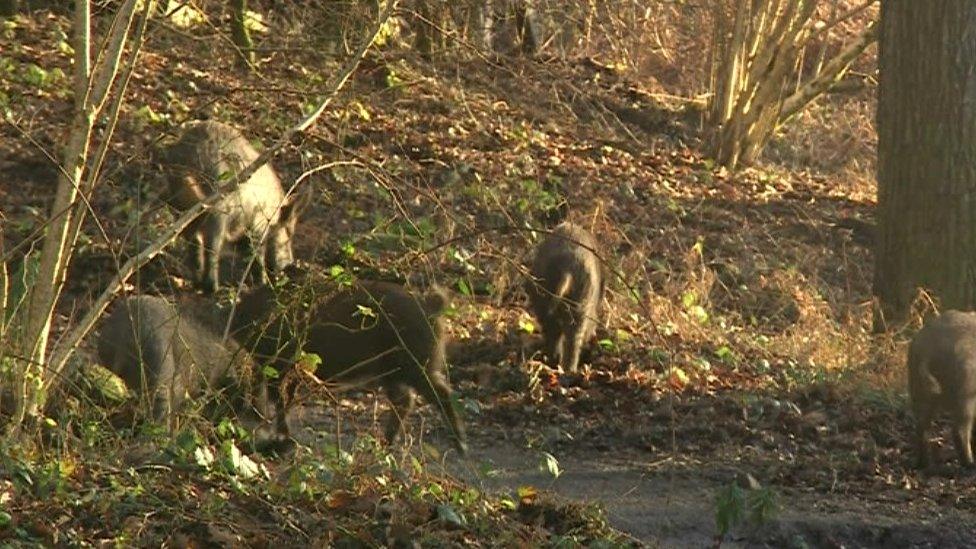
Wildlife rangers cull the boar population each year to keep numbers at about 400
Speaking to BBC Gloucestershire, Ms Lyons said: "For many generations we have had no experience with this animal.
"They are big, they are bulky, they are shaggy, they have very visible tusks and that does scare people, but personally I find them thrilling to encounter."
Ms Lyons has been living alongside the resurgent wild boar in the Forest of Dean in order to study the animals' habitat and behaviour.
Her newly published book Groundbreakers looks at the history of the feral mammals and their relationship to humans.
"I like to call them idiosyncratic," said Ms Lyons. "They are really unique among our British fauna."
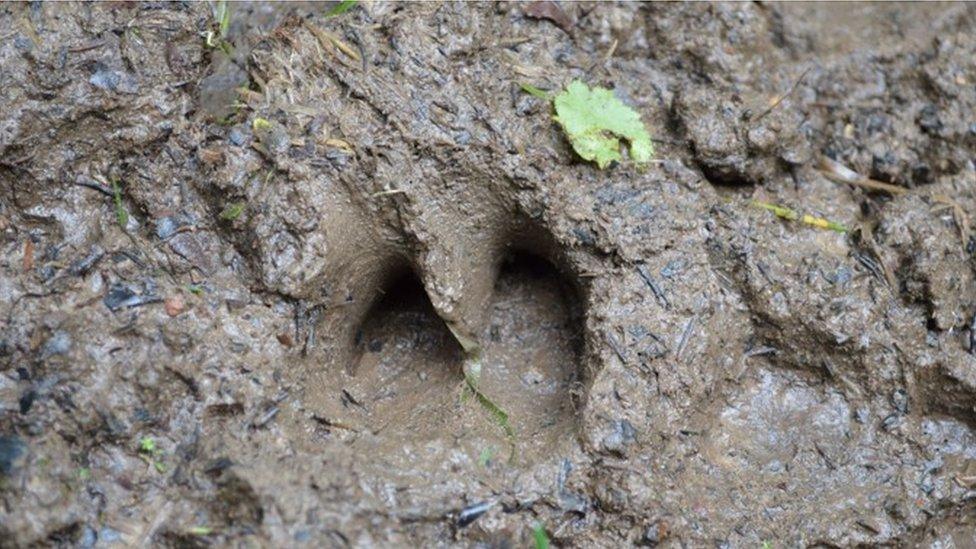
Wild boar help the local ecosystem by rooting in the ground
Ms Lyons said the boar are important for local ecosystems, particularly through their habit of rooting.
"They have incredible, powerful snouts and they really dig quite extensively and quite deeply.
"That has the effect of mixing up the different layers of the soil, which enhances its fertility and encourages a greater diversity of plants and insects.
"They also love to wallow, creating wet, muddy pools which become habitats for aquatic organisms and provide drinking water," she added.
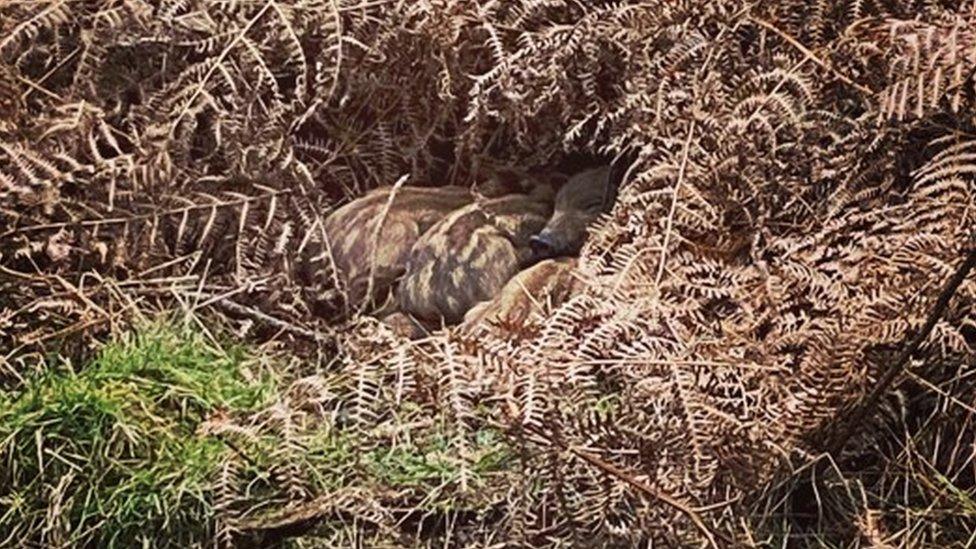
Wild boar live in matriarchal groups
Forestry Commission wildlife rangers monitor numbers in the Forest of Dean each spring and carry out culls, if necessary, to keep the target population to about 400.
A spokesperson for Forestry England said: "This has been set at a level which means the animals are in balance with the available habitat, reduce negative impacts to amenity grassland areas and are less at risk of disease."
While researching her book, Ms Lyons came to the conclusion that people are starting to live more comfortably alongside the wild animals.
"It does seem that the controversy has died down," she said. "You always used to get headlines that someone's been chased, but there's much less attention on them now."

Follow BBC West on Facebook, external, X, external and Instagram, external. Send your story ideas to: bristol@bbc.co.uk , external
Related topics
- Published21 February 2019
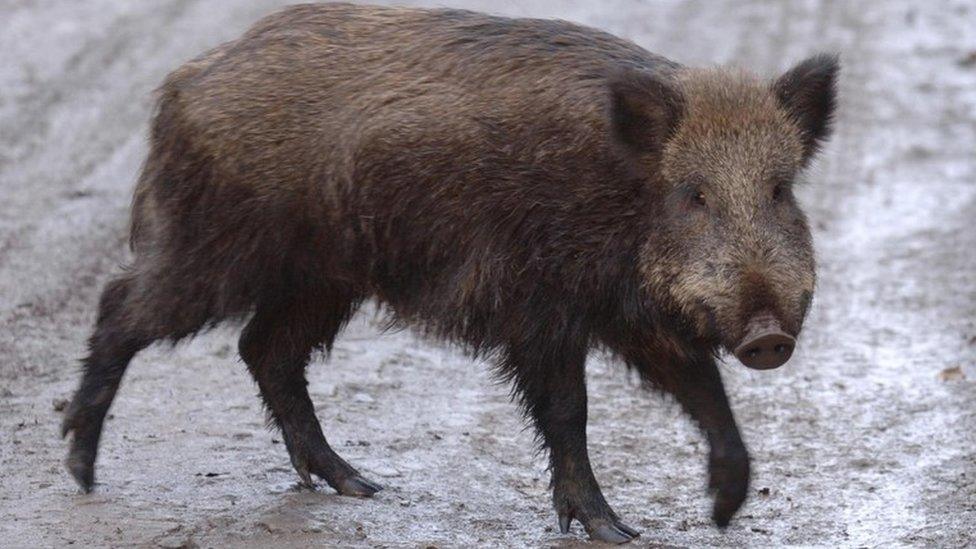
- Published26 January 2017
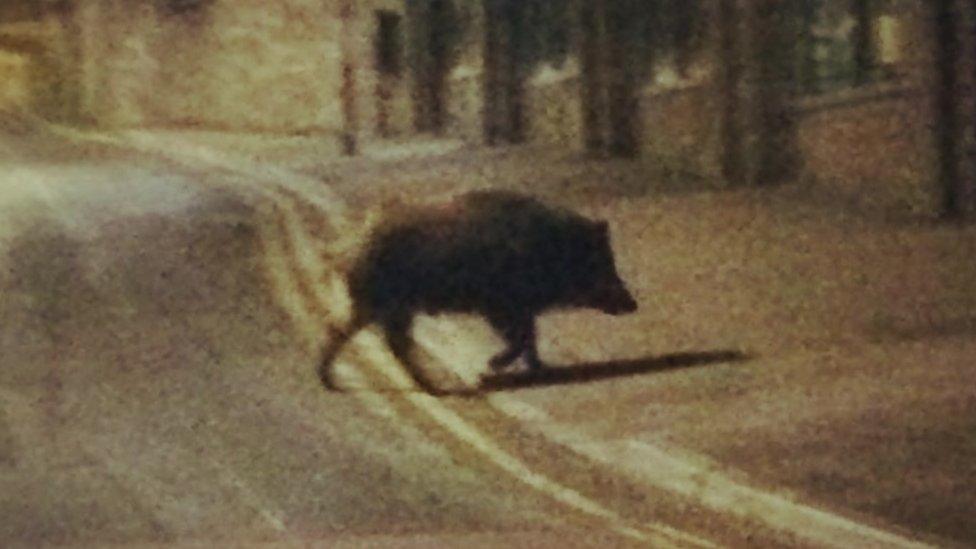
- Published4 June 2014
